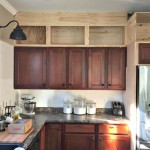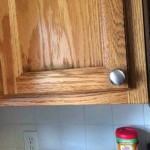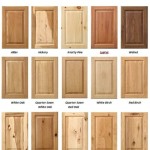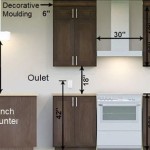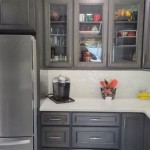The Allure of Vintage Kitchen Cabinets with Flour Bins
Vintage kitchen cabinets, particularly those featuring integrated flour bins, represent a bygone era of domestic functionality and aesthetic charm. These cabinets, often crafted from solid wood and adorned with period-specific hardware, offer a glimpse into a time when kitchens were meticulously organized and designed for efficiency. The built-in flour bin, a hallmark of these designs, speaks to a self-sufficient lifestyle where baking was a common practice, and ingredients were stored with care.
The enduring appeal of these cabinets stems from a combination of factors. Firstly, their robust construction ensures longevity, making them highly desirable as sustainable and reusable pieces of furniture. Secondly, their unique design elements, such as ornate door panels, curved edges, and distinctive hardware, provide a character and warmth that is often lacking in modern, mass-produced cabinetry. Finally, the integrated flour bin itself offers a tangible link to the past, evoking images of home-baked bread and family gatherings.
This article will delve into the historical context, design features, restoration considerations, and modern-day integration of vintage kitchen cabinets with flour bins, exploring why they remain a coveted addition to contemporary homes.
Historical Significance and Evolution
The prevalence of kitchen cabinets with built-in flour bins can be traced back to the late 19th and early 20th centuries. This period witnessed significant advancements in kitchen design, driven by a growing emphasis on efficiency and hygiene. Prior to this era, kitchens were often rudimentary spaces, lacking designated storage solutions. As technology advanced and home economics gained importance, kitchens began to evolve into more organized and functional areas.
The introduction of the Hoosier cabinet in the early 1900s marked a turning point in kitchen cabinetry. Manufactured by the Hoosier Manufacturing Company, these cabinets were essentially self-contained workstations, incorporating various features such as flour sifters, spice racks, and work surfaces. While not all Hoosier cabinets included a dedicated flour bin, the concept of integrated storage became widely popular.
Flour bins themselves were designed to provide a convenient and sanitary storage solution for flour. Typically constructed from metal or wood, these bins featured a hinged lid and often a built-in sifter. The sifter allowed for easy measurement and dispensing of flour, reducing the risk of spills and ensuring consistent results in baking. The placement of the flour bin within the cabinet was strategically chosen to minimize effort and maximize efficiency during the baking process.
As kitchen design progressed, flour bins became a common feature in custom-built and factory-made cabinets alike. The materials used ranged from solid wood, such as oak, maple, and pine, to enameled metal and early forms of laminate. The styles varied depending on the prevailing aesthetic trends, from the ornate detailing of the Victorian era to the streamlined designs of the Art Deco and Mid-Century Modern periods.
The decline in popularity of built-in flour bins coincided with the rise of packaged foods and the increasing reliance on ready-made ingredients. As baking became less prevalent in the average household, the need for dedicated flour storage diminished. However, the nostalgic appeal and functional benefits of these vintage cabinets have ensured their continued relevance in the modern era.
Design Features and Identifying Characteristics
Vintage kitchen cabinets with flour bins exhibit a wide range of design features, reflecting the diverse styles and manufacturing techniques of the period. Identifying these characteristics is crucial for both collectors and homeowners seeking to incorporate these pieces into their homes. Several key elements distinguish these cabinets from their modern counterparts.
Materiality is a primary indicator of age and quality. Solid wood construction, particularly using hardwoods such as oak, maple, and cherry, is a common feature of early 20th-century cabinets. The type of wood, its grain pattern, and its finish can provide valuable clues about the cabinet's origin and era. The presence of original hardware, such as hinges, knobs, and latches, is another important consideration. These components often feature unique designs and materials, reflecting the craftsmanship of the time.
The design of the flour bin itself is a key identifying characteristic. Metal bins, typically made of tin or galvanized steel, were common in early models. Wooden bins, often lined with metal or enamel, were also prevalent. The presence of a built-in sifter is a hallmark of many vintage flour bins, indicating a focus on efficiency and convenience. The size and capacity of the bin can also vary, depending on the overall design of the cabinet.
Another important feature is the presence of other integrated storage solutions. Vintage kitchen cabinets often included a variety of specialized compartments, such as spice racks, bread boxes, and cutting boards. These features demonstrate the emphasis on organization and functionality that characterized early kitchen design. The layout of these compartments, and their relationship to the flour bin, can provide insights into the intended workflow of the kitchen.
The overall style of the cabinet is also a crucial factor in identification. Victorian-era cabinets typically feature ornate detailing, such as carved panels, decorative moldings, and intricate hardware. Art Deco cabinets are characterized by their streamlined shapes, geometric patterns, and use of contrasting materials. Mid-Century Modern cabinets often feature clean lines, minimalist designs, and a focus on functionality. Understanding these stylistic trends is essential for accurately dating and appreciating vintage kitchen cabinets.
Restoration and Modern Integration
Acquiring a vintage kitchen cabinet with a flour bin is often followed by the consideration of restoration. Depending on the cabinet's condition, restoration may range from simple cleaning and polishing to more extensive repairs and refinishing. The goal of restoration should be to preserve the cabinet's original character while ensuring its functionality and longevity. Thorough assessment of the cabinet's structural integrity is paramount. This includes checking for signs of rot, insect damage, or warping. Repairing these issues is crucial to prevent further deterioration.
Cleaning the cabinet is another essential step in the restoration process. Gentle cleaning solutions, such as mild soap and water, should be used to remove dirt and grime. Avoid harsh chemicals or abrasive cleaners, as these can damage the finish. Special attention should be paid to cleaning the flour bin, ensuring that it is free of any residual flour or contaminants.
Refinishing the cabinet may be necessary if the original finish is damaged or worn. This involves stripping the old finish, sanding the wood surface, and applying a new finish. The choice of finish should be carefully considered, taking into account the cabinet's style and intended use. Traditional finishes, such as varnish or shellac, can help to preserve the cabinet's vintage character. Modern finishes, such as polyurethane, offer greater durability and water resistance.
Replacing damaged hardware is another common restoration task. Original hardware can often be sourced from antique stores or online retailers specializing in vintage hardware. When replacing hardware, it is important to choose pieces that are consistent with the cabinet's style and era. In some cases, it may be necessary to fabricate custom hardware to match the original design.
Integrating a vintage kitchen cabinet with a flour bin into a modern kitchen requires careful planning and consideration. These cabinets are often smaller than modern cabinets, so it is important to ensure that they fit seamlessly into the overall kitchen layout. They can be used as standalone pieces, or incorporated into a larger cabinet system. The flour bin itself can be repurposed for storing other dry goods, such as sugar, rice, or beans. Alternatively, it can be used for its original purpose, providing a convenient and stylish storage solution for flour.
The placement of the cabinet should be carefully considered, taking into account its functionality and aesthetic appeal. It can be placed near the baking center, providing easy access to flour and other baking ingredients. Alternatively, it can be placed in a more prominent location, serving as a focal point in the kitchen. The cabinet's style and finish should complement the overall design of the kitchen, creating a cohesive and harmonious space.
By carefully restoring and integrating vintage kitchen cabinets with flour bins into modern kitchens, homeowners can preserve a piece of history while adding character and functionality to their homes. These cabinets offer a tangible link to the past, evoking images of home-baked bread and family gatherings. Their enduring appeal is a testament to the timeless beauty and practicality of well-designed and well-crafted furniture.

Antique Kitchen Cabinet With Tilt Out Flour Bin

Hoosier Style Cabinet Original Flour Bin With Sifter

The Post That Starts Out Odd And Just Keeps Going

Antique Oak Wilson Kitchen Cabinet Stepback Cupboard Hoosier Flour Bin Primitive

Hoosier Excellence Cabinets Browsing The Atlas
My Hoosier Cabinet The T Cozy

Hoosier Excellence Cabinets Browsing The Atlas

Hoosier Kitchen Cabinet Cupboard With Flour Bin Sifter 275 Hudsonville This Has Been In Our Family For Approximately 50 Years It Is 64 Tall 40 Wide

1914 White Beauty Hoosier Cabinet Second Chance Charms
Grandmother S Kitchen So Much White Dusty Old Thing
Related Posts

